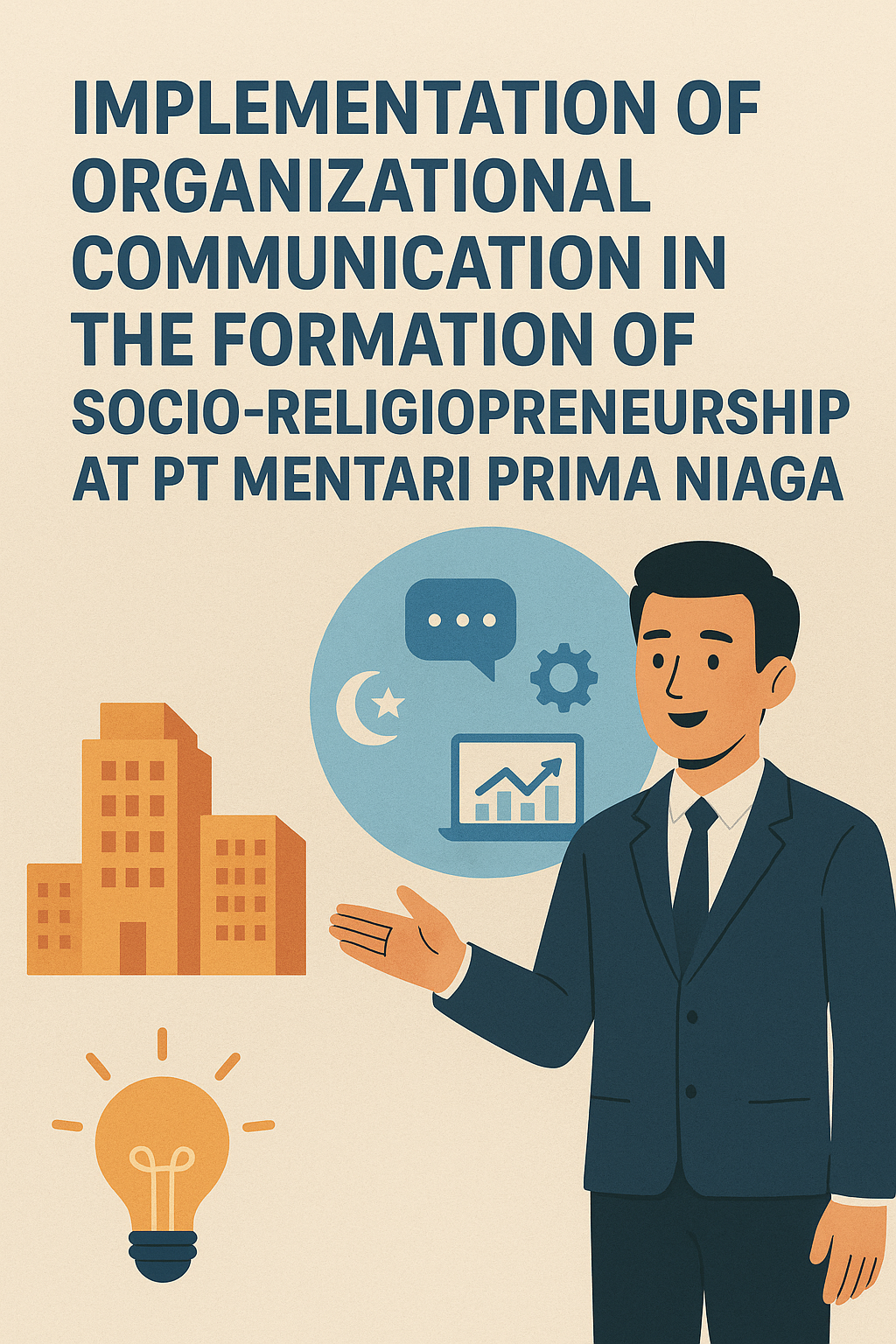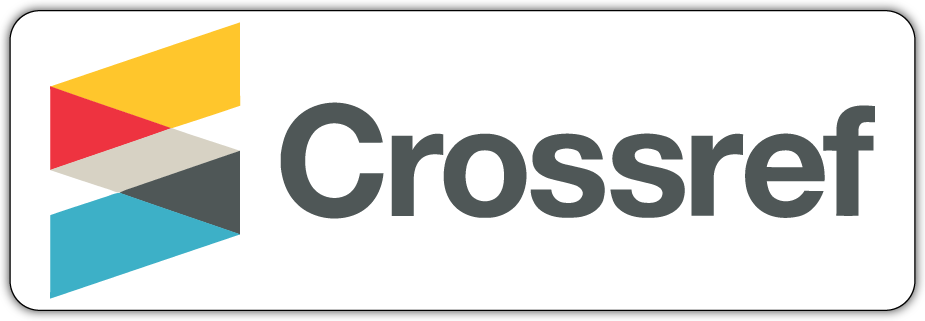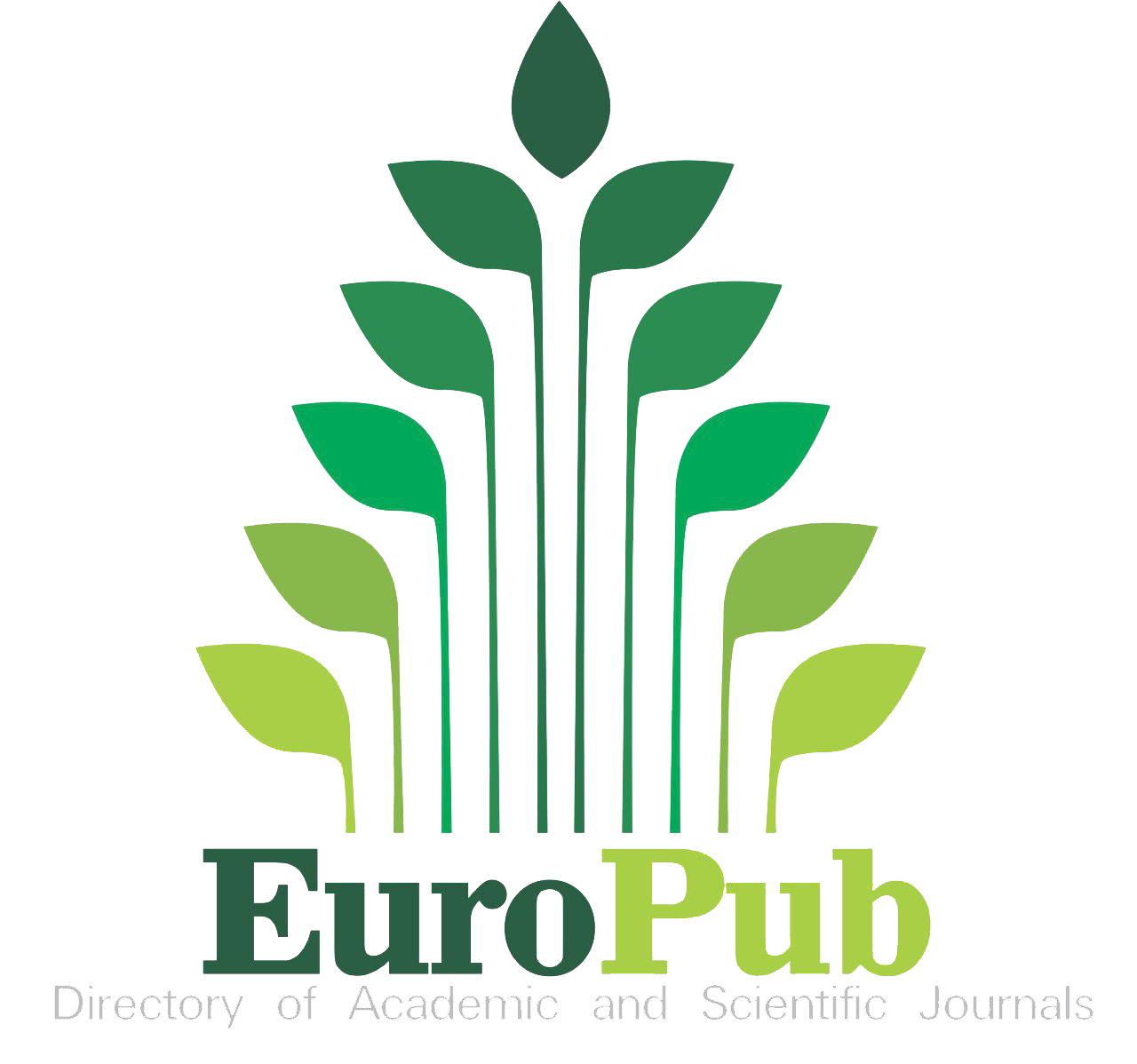Implementation of Organizational Communication in the Formation of Socio-Religiopreneurship at PT Mentari Prima Niaga
DOI:
https://doi.org/10.12928/commicast.v6i1.12947Keywords:
Organizational Communication , Socio-religiopreneurship , Communication Strategy , PT Mentari Prima Niaga , Muhammadiyah-Owned EnterpriseAbstract
In the modern business world, socio-religiopreneurship is an approach that integrates Islamic values with business practices, creating a balance between economic profit and social benefits. As part of the Muhammadiyah Charity, PT Mentari Prima Niaga applies this concept in its business operations. This research aims to analyze the organizational communication strategy used by PT Mentari Prima Niaga in implementing socio-religiopreneurship to understand how communication can support the sustainability of Islamic value-based businesses. The research method used is a qualitative approach with a case study, where data is collected through interviews, observations, and document analysis. The results showed that PT Mentari Prima Niaga implemented a value-based communication strategy, two-way communication, and digital technology to improve organizational synergy. The main barriers in organizational communication include continually improving the understanding of Islamic values among employees, missing communication in the workplace, and sometimes the lack of effective communication channels in certain situations. The company overcomes these barriers through intensive training programs and strengthening internal communication procedures. The results of this study provide implications for companies that want to implement socio-religiopreneurship with effective communication strategies. In addition, this research also provides insights for Islamic-based business institutions in optimizing organizational communication to achieve economic and social welfare sustainably.
References
Abas, S., Ahmad, M. F., & Sianturi, N. M. (2020). Exploring Persuasive Communication Model Through Entrepreneurial Learning (El) In Affecting Student Mindsets For Entrepreneurs. Journal of Critical Reviews, 7(13). https://doi.org/10.31838/jcr.07.13.31
Adhantoro, M. S. (2025). Strategic technological innovation through ChatMu: transforming information accessibility in Muhammadiyah. Frontiers in Artificial Intelligence, 8. https://doi.org/10.3389/frai.2025.1446590
Agustina, S. D. (2024). Peranan Komunikasi Organisasi Dalam Pengembangan Bisnis Syariah. Al-A’mal: Jurnal Manajemen Bisnis Syariah. http://ejournal.an-nadwah.ac.id/index.php/Al-amal/article/view/665
Al-Daihani, M. (2025). Business process model for “crowdfunding cash waqf model.” Journal of Islamic Accounting and Business Research, 16(1), 147–169. https://doi.org/10.1108/JIABR-02-2023-0046
Ali, M. (2015). The Muhammadiyah’s 47th congress and “Islam berkemajuan.” In Studia Islamika (Vol. 22, Issue 2, pp. 377–386). https://doi.org/10.15408/sdi.v22i2.1978
Anggadwita, G. (2017). Entrepreneurial intentions from an Islamic perspective: A study of Muslim entrepreneurs in Indonesia. In International Journal of Entrepreneurship and Small Business (Vol. 31, Issue 2, pp. 165–179). https://doi.org/10.1504/IJESB.2017.084086
Aprianto, N. E. K. (2016). Peran Komunikasi Kepemimpinan Dalam Pengembangan Organisasi Perspektif Islam. El-Jizya: Jurnal Ekonomi Islam. https://ejournal.uinsaizu.ac.id/index.php/eljizya/article/view/985
Ascarya, A. (2022). The role of Islamic social finance during Covid-19 pandemic in Indonesia’s economic recovery. International Journal of Islamic and Middle Eastern Finance and Management, 15(2), 386–405. https://doi.org/10.1108/IMEFM-07-2020-0351
Assyakurrohim, D., Ikhram, D., Sirodj, R. A., & Afgani, M. W. (2022). Case Study Method in Qualitative Research. Jurnal Pendidikan Sains Dan Komputer, 3(01), 1–9. https://doi.org/10.47709/jpsk.v3i01.1951
Atmaja, S., & Dewi, R. (2018). Komunikasi Organisasi (Suatu Tinjauan Teoritis Dan Praktis). Inter Komunika : Jurnal Komunikasi, 3(2), 192. https://doi.org/10.33376/ik.v3i2.234
Ayub, M. (2024). Waqf for accelerating socioeconomic development: a proposed model with focus on Pakistan. Qualitative Research in Financial Markets, 16(5), 937–961. https://doi.org/10.1108/QRFM-07-2023-0161
Baity, A. N., & BayuBawono, A. D. (2023). Analisis Implementasi SAK ETAP Dalam Pencatatan Laporan Keuangan PT Mentari Prima Niaga. eprints.ums.ac.id. https://eprints.ums.ac.id/id/eprint/112511
Chandra, Y. (2017). Social entrepreneurship as emancipatory work. Journal of Business Venturing, 32(6), 657–673. https://doi.org/10.1016/j.jbusvent.2017.08.004
Creswell, J. W., & Creswell, J. D. (2018). Research Design: Qualitative, Quantitative, and Mixed Methods Approaches - John W. Creswell, J. David Creswell - Google Books. In SAGE Publications, Inc.
Djamil, F. (1995). The muhammadiyah and the theory of Maqâsid Al-Sharî’ah. Studia Islamika, 2(1), 53–68. https://doi.org/10.15408/sdi.v2i1.841
Faisal, I., & Rifai, A. (2020). Muhammadiyah Da’wah Communication on Instagram in Preventing the Spread of COVID-19. MIMBAR : Jurnal Sosial Dan Pembangunan, 36(2). https://doi.org/10.29313/mimbar.v36i2.5918
Firmansah, Y. (2024). Sustainability in small business settings through tacit knowledge transfer across generations: Lessons learned from waqf-based organizations. In The Future of Small Business in Industry 5.0 (pp. 265–300). https://doi.org/10.4018/979-8-3693-7362-0.ch011
Fitra, T. R. (2021). Moderate Islamic Jurisprudence: Study of Muhammadiyah’s Decision on Changes in Criteria for Fajr Prayer Time. Mazahib Jurnal Pemikiran Hukum Islam, 20(1), 43–76. https://doi.org/10.21093/mj.v20i1.3150
George, G. (2021). Digital Sustainability and Entrepreneurship: How Digital Innovations Are Helping Tackle Climate Change and Sustainable Development. Entrepreneurship: Theory and Practice, 45(5), 999–1027. https://doi.org/10.1177/1042258719899425
Goldhaber, G. M. (1986). Organizational Communication. Brown Publisher.
Goldhaber, G. M. (1987). Implementing organizational communication diagnosis: the communication audit. In Gerald M. Goldhaber Organizational Communication: 1978. https://doi.org/10.1111/j.1468-2958.1978.tb00624.x
Hamami, T. (2021). Propetic Leadership Liberation in Basic and Intermediate Muhammadiyah Schools. Millah: Journal of Religious Studies, 20(2), 385–416. https://doi.org/10.20885/millah.vol20.iss2.art8
Hariyadi. (2021). The Influence of Information Technology and Communication Advancement Especially Smartphone on Muhammadiyah University of West Sumatera’s Students Year 2019. In Journal of Physics: Conference Series (Vol. 1779, Issue 1). https://doi.org/10.1088/1742-6596/1779/1/012083
Harlianti, M. S. (2021). Dysmenorrhea management by non-medical faculties students of universitas muhammadiyah surakarta in 2019. International Journal of Applied Pharmaceutics, 13, 27–29. https://doi.org/10.22159/ijap.2021.v13s1.Y0084
Hilmy, M. (2013). Whither Indonesia’s islamic moderatism?: A reexamination on the moderate vision of Muhammadiyah and NU. Journal of Indonesian Islam, 7(1), 24–48. https://doi.org/10.15642/JIIS.2013.7.1.24-48
Islamiyah, P. O., & Sukaris, S. (2021). Peran Komunikasi dan Budaya Organisasi pada Kinerja Karyawan PT. Baja Stainless. Master: Jurnal Manajemen Dan Bisnis Terapan. https://jurnalnasional.ump.ac.id/index.php/MASTER/article/view/12668
LaBelle, S., & Waldeck, J. H. (2020). Strategic communication for organizations. In Strategic Communication for Organizations. https://doi.org/10.2307/j.ctvw1d664
Latief, H. (2020). Local Dynamics and Global Engagements of the Islamic Modernist Movement in Contemporary Indonesia: The Case of Muhammadiyah (2000-2020). Journal of Current Southeast Asian Affairs, 39(2), 290–309. https://doi.org/10.1177/1868103420910514
Lestari, N. D. (2021). The effect of laughter therapy to reduce work stress levels among administrative staff at Universitas Muhammadiyah Yogyakarta. Bali Medical Journal, 10(3), 1225–1229. https://doi.org/10.15562/bmj.v10i3.2856
Malecki, E. J. (2018). Entrepreneurship and entrepreneurial ecosystems. Geography Compass, 12(3). https://doi.org/10.1111/gec3.12359
Massey, J. E. (2001). Managing organizational legitimacy: Communication strategies for organizations in crisis. In Journal of Business Communication. https://doi.org/10.1177/002194360103800202
Mawadda, I., Safitri, A. A., Anggraini, A., & Rohman, S. (2022). Peran komunikasi organisasi bagi efektivitas lembaga pendidikan Islam di era globalisasi. In MUNTAZAM. https://journal.unsika.ac.id/index.php/muntazam/article/view/6840
Nada rahmi, N. R. S. J., Ken amasita, K. A. S., & Suanti tunggala, S. T. (2022). Analysis of culture shock in intercultural communication studies. COMMICAST, 3(3), 211–220. https://doi.org/10.12928/commicast.v3i2.5958
Natasya, W. A. P., & Adi, S. W. (2023). Pengaruh Kedisiplinan, Kepemimpinan, Dan Motivasi Kerja Terhadap Keefektifitas Kinerja Karyawan Studi Empiris Pada PT Mentari Prima Niaga Yogyakarta. eprints.ums.ac.id. https://eprints.ums.ac.id/id/eprint/112434
Nova, F., Rahayu, D., & Handayani, E. (2015). The influence of consumer moral, risk perception, and consumer motive to consumer buying intention of pirated CDs/DVDs. International Journal of Education and Research. https://www.ijern.com/journal/2016/August-2016/17.pdf
Parwez, S. (2017). Community-based entrepreneurship: evidences from a retail case study. Journal of Innovation and Entrepreneurship, 6(1). https://doi.org/10.1186/s13731-017-0074-z
Qodir, Z. (2021). Muhammadiyah identity and muslim public good: Muslim practices in Java. International Journal of Islamic Thought, 19(1), 133–146. https://doi.org/10.24035/IJIT.19.2021.203
Rabbani, M. R. (2021a). Exploring the role of islamic fintech in combating the aftershocks of covid-19: The open social innovation of the islamic financial system. Journal of Open Innovation: Technology, Market, and Complexity, 7(2). https://doi.org/10.3390/joitmc7020136
Rabbani, M. R. (2021b). The response of islamic financial service to the covid-19 pandemic: The open social innovation of the financial system. Journal of Open Innovation: Technology, Market, and Complexity, 7(1). https://doi.org/10.3390/JOITMC7010085
Risa, Y. (2020). Community Empowerment as The Corporate’s Social Responsibility: Case Study of PT. Tirta Investama Plant Solok, Indonesia. Varia Justicia, 15(2). https://doi.org/10.31603/variajusticia.v15i2.2940
Schreier, M., Stamann, C., Janssen, M., Dahl, T., & Whittal, A. (2019). Qualitative content analysis: Conceptualizations and challenges in research practice-introduction to the FQS special issue “qualitative content analysis I.” Forum Qualitative Sozialforschung, 20(3). https://doi.org/10.17169/fqs-20.3.3393
Soeratno, A. S. (2017). Pengembangan Usaha Muhammadiyah Berdampak Bagi Umat. News.Republika.Co.Id. https://news.republika.co.id/berita/ow9qvw291/pengembangan-usaha-muhammadiyah-berdampak-bagi-umat#:~:text=BUMM adalah badan usaha yang,bagi ekonomi persyarikatan dan bangsa
Soeratno, A. S. (2023). Syauqi Soeratno Jelaskan Ekonomi Muhammadiyah di Era Disrupsi. Lldikti5.Kemdikbud.Go.Id. https://lldikti5.kemdikbud.go.id/home/detailpost/syauqi-soeratno-jelaskan-ekonomi-muhammadiyah-di-era-disrupsi
Suara Muhammadiyah. (2020). PCIM dan Amanat Internasionalisasi Muhammadiyah. Suara Muhammadiyah.
Subiyakto, B., Jumriani, J., Abbas, E. W., Muhaimin, M., & Rusmaniah (2022). Community Economic Empowerment Through The Existence of Thematic Village. The Innovation of Social Studies Journal. http://ppjp.ulm.ac.id/journals/index.php/iis/article/view/6368
Sugiyono, & Lestari, P. (2021). Metode Penelitian Komunikasi (Kuantitatif, Kualitatif, dan Cara Mudah Menulis Artikel pada Jurnal Internasional). In Bandung: Alfabeta.
Sulistiyanto, P. (2006). Muhammadiyah, local politics and local identity in Kotagede. Sojourn, 21(2), 254–270. https://doi.org/10.1355/SJ21-2F
Suryadin, A. (2022). Lazismu And Muhammadiyah Philanthropy In The Covid-19 Pandemic (CIPP Evaluation Model). Jurnal Ilmiah Peuradeun, 10(2), 385–402. https://doi.org/10.26811/peuradeun.v10i2.674
Syamsuddin, M. (1995). The muhammadiyah da’wah and allocative politics in the new order Indonesia. Studia Islamika, 2(2), 35–71. https://doi.org/10.15408/sdi.v2i2.834
Wardani, S. (2023). Komunikasi Organisasi Sebagai Kunci Efektivitas Dan Produktivitas Dalam Lingkungan Ekonomi Modern. Jurnal Ekonomi Dan Bisnis. http://www.e-jurnal.stiebii.ac.id/index.php/ekonomibisnis/article/view/151
Wu, A. (2015). Religion and completed suicide: A meta-analysis. PLoS ONE, 10(6). https://doi.org/10.1371/journal.pone.0131715
Zhaldak, H. (2021). Determination of features of development of modern theories of management. Technology Audit and Production Reserves, 1(4(57)). https://doi.org/10.15587/2706-5448.2021.225380

Downloads
Published
How to Cite
Issue
Section
License
Copyright (c) 2025 Ahmad Syauqi Soeratno, Wihana Kirana Jaya, Nyarwi Ahmad

This work is licensed under a Creative Commons Attribution-ShareAlike 4.0 International License.
License and Copyright Agreement
In submitting the manuscript to the journal, the authors certify that:
- They are authorized by their co-authors to enter into these arrangements.
- The work described has not been formally published before, except in the form of an abstract or as part of a published lecture, review, thesis, or overlay journal. Please also carefully read Commicast's Posting Your Article Policy at http://journal2.uad.ac.id/index.php/commicast/about/editorialPolicies#custom-5
- That it is not under consideration for publication elsewhere,
- That its publication has been approved by all the author(s) and by the responsible authorities – tacitly or explicitly – of the institutes where the work has been carried out.
- They secure the right to reproduce any material that has already been published or copyrighted elsewhere.
- They agree to the following license and copyright agreement.
Copyright
Authors who publish with Commicast agree to the following terms:
- Authors retain copyright and grant the journal right of first publication with the work simultaneously licensed under a Creative Commons Attribution License (CC BY-SA 4.0) that allows others to share the work with an acknowledgment of the work's authorship and initial publication in this journal.Â
- Authors are able to enter into separate, additional contractual arrangements for the non-exclusive distribution of the journal's published version of the work (e.g., post it to an institutional repository or publish it in a book), with an acknowledgment of its initial publication in this journal.
- Authors are permitted and encouraged to post their work online (e.g., in institutional repositories or on their website) prior to and during the submission process, as it can lead to productive exchanges, as well as earlier and greater citation of published work.
Licensing for Data Publication
Commicast use a variety of waivers and licenses, that are specifically designed for and appropriate for the treatment of data:
Open Data Commons Attribution License, http://www.opendatacommons.org/licenses/by/1.0/ (default)
Creative Commons CC-Zero Waiver, http://creativecommons.org/publicdomain/zero/1.0/
Open Data Commons Public Domain Dedication and Licence, http://www.opendatacommons.org/licenses/pddl/1-0/
Other data publishing licenses may be allowed as exceptions (subject to approval by the editor on a case-by-case basis) and should be justified with a written statement from the author, which will be published with the article.
Open Data and Software Publishing and Sharing
The journal strives to maximize the replicability of the research published in it. Authors are thus required to share all data, code or protocols underlying the research reported in their articles. Exceptions are permitted but have to be justified in a written public statement accompanying the article.
Datasets and software should be deposited and permanently archived inappropriate, trusted, general, or domain-specific repositories (please consult http://service.re3data.org and/or software repositories such as GitHub, GitLab, Bioinformatics.org, or equivalent). The associated persistent identifiers (e.g. DOI, or others) of the dataset(s) must be included in the data or software resources section of the article. Reference(s) to datasets and software should also be included in the reference list of the article with DOIs (where available). Where no domain-specific data repository exists, authors should deposit their datasets in a general repository such as ZENODO, Dryad, Dataverse, or others.
Small data may also be published as data files or packages supplementary to a research article, however, the authors should prefer in all cases a deposition in data repositories.






















